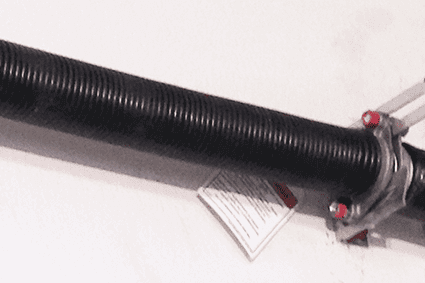
Garage Door Broken Spring Repair: Ensuring Safety and Reliability
Introduction A broken spring in a garage door can halt its operation and pose significant safety risks. Understanding the essentials of garage door spring repair is crucial for homeowners to ensure the safe and efficient functioning of their garage doors.
Understanding Garage Door Springs Garage doors typically use two types of springs: torsion springs and extension springs. Torsion springs are mounted above the garage door opening, while extension springs are located along the tracks on either side. These springs are under high tension and play a critical role in balancing and lifting the door.
Signs of a Broken Spring
- Door Won’t Open: If your garage door won’t open or only opens a few inches, a broken spring could be the culprit.
- Loud Noise: A loud bang from the garage often indicates a spring snapping.
- Gap in the Spring: A visible gap in the torsion spring indicates a break.
- Bent Top Section: If the top section of your garage door is bent, it might be due to a broken spring.
- Door Falls Quickly When Closing: A door that closes too quickly is dangerous and may be due to a broken spring.
Risks of DIY Repair Attempting to repair a garage door spring yourself can be extremely dangerous due to the high tension in the springs. It’s not advisable for homeowners to undertake this task without proper training and tools.
Professional Repair Services Professional garage door technicians have the expertise and tools necessary to safely repair or replace broken springs. They can also provide a comprehensive check of other components to ensure overall safety and functionality.
The Repair Process
- Safety Inspection: Technicians start with a thorough inspection to identify the issue and assess overall door safety.
- Spring Replacement: Both springs are usually replaced to ensure balanced operation, even if only one is broken.
- Lubrication and Adjustment: Other parts of the door are lubricated and adjusted as needed.
- Final Testing: The door’s balance and safety features are tested to ensure proper operation.
Preventive Maintenance Regular maintenance can prevent spring failure and extend the life of your garage door. This includes:
- Lubricating Moving Parts: Regularly lubricating springs, rollers, and hinges.
- Checking Balance: Periodically testing the door’s balance.
- Professional Inspection: Annual inspections by a professional to identify potential issues.
Repairing a broken garage door spring is not a DIY project. It requires professional expertise to ensure safety and proper functioning. Regular maintenance and prompt repair of broken springs are crucial to the longevity and reliability of your garage door. Remember, safety comes first when it comes to garage door repairs.
2 Hour Response Time: We never want our clients to wait for our service. Therefore, we make sure we follow the 2 hour response time rule. Once we receive a call from our clients, we ensure to reach them within 1 hour maximum. This is one of our biggest priorities and we make sure that the customer does not wait for more than 2 hours if needed. You can contact us (917)361-4816